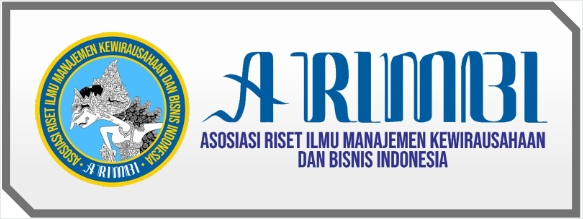Pengaruh Employee Engagement terhadap Kinerja Karyawan Program Diploma III di Fakultas Ekonomi Universitas Islam Indonesia
DOI:
https://doi.org/10.30588/jmp.v6i2.298Keywords:
human resource, employee engagement, employee performanceAbstract
This research aims to study the independent variable (employee engagement) that affects employee performance in a positive and significant way. The questionnaire used in this research is a questionnaire that has been adapted to the theory of analysis used. The overall statement in the questionnaire is a favorable statement with 13 respondents who are all employees of D-3 Program in Faculty of Economics of Islamic University of Indonesia (UII). The results of multiple linear regression analysis show that employee engagement variable influence employee performance with a positive, but not significant way. It can be seen from the results of the F-test that shows Fcount<Ftabel (6.15 <8.81) and shown by the value of coefficient of determination (R2) of 0.969. The result of t-test gives all factors in employee engagement variable does not affect employee performance variable and collaborate factor is not dominant factor influence employee performance, whereas convey factor has the biggest influence to employee performance according to coefficient value.
References
Alwi, S. (2008). Manajemen Sumber Daya Manusia: Strategi Keunggulan Kompetitif. Edisi Kedua. Yogyakarta: BPFE.
Bernardin, H.J. (2010). Human Resource Management: An Experiential Approach. Fifth Edition. Singapore: McGraw-Hill Book, Inc.
Crim, D. & Seijts, G.H. (2006). The 10 Cs of Employee Engagement. Ivey Business Journal.
Cooper, D.R. & Schindler, P.S. (2008). Business Research Method. Tenth Edition. New York: The McGraw-Hill, Inc.
Gallup. (2013). State of The Global Workplace: Employee Engagement Insights for Business Leaders Worldwide. Gallup, Inc.
Heskett, J., Jones, T.O., Loveman, G.W., Sasser Jr., W.E, & Schlesinger, L.A. (1994). Putting The Service–Profit Chain To Work. Harvard Business Review.
Indriantoro, N. & Soepomo, B. (1999). Metodologi Penelitian Bisnis. Edisi Pertama. Yogyakarta: BPFE.
Kular, G., Rees, S., & Truss, K. (2008). Employee Engagement: A Literature Review. Kingston Business School Working Paper Series, No.19. in Nunnally, J. (1967). Psychometric Methods. New York: McGraw-Hill, Inc.
Saks, A.M. & Gruman, J.A. (2014). What Do We Really Know About Employee Engagement? Human Resources Development Quarterly, Vol 25, No.2.
Sekaran, U. (2000). Research Methods for Business. Jakarta: Gramedia Pustaka Utama.
Simamora, H. (2004). Manajemen Sumber Daya Manusia. Edisi Ketiga. Yogyakarta: BP STIE YKPN.
Sugiyono. (2006). Metode Penelitian Kuantitatif Kualitatif dan R&D. Bandung: Alfabeta.
Suparyadi. Manajemen Sumber Daya Manusia: Menciptakan Keunggulan Bersaing Berbasis Kompetensi SDM. Yogyakarta: Andi Offset.
Widarjono, A. (2009). Ekonometrika Pengantar dan Aplikasinya. Edisi Ketiga. Yogyakarta: Ekonisia.
Downloads
Published
How to Cite
Issue
Section
License
Authors who publish with Jurnal Maksipreneur agree to the following terms:
Authors retain copyright and grant the Jurnal Maksipreneur right of first publication with the work simultaneously licensed under a Creative Commons Attribution 4.0 International License that allows others to share (copy and redistribute the material in any medium or format) and adapt (remix, transform, and build upon the material) the work for any purpose, even commercially with an acknowledgment of the work's authorship and initial publication in Jurnal Maksipreneur.
Authors are able to enter into separate, additional contractual arrangements for the non-exclusive distribution of the journal's published version of the work (e.g., post it to an institutional repository or publish it in a book), with an acknowledgment of its initial publication in Jurnal Maksipreneur. Authors are permitted and encouraged to post their work online (e.g., in institutional repositories or on their website) prior to and during the submission process, as it can lead to productive exchanges, as well as earlier and greater citation of published work (See The Effect of Open Access).























